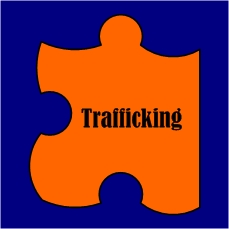Health Minister India: Adoption over Surrogacy

“The website of Texas-based Medical Tourism Corporation has an entire page dedicated to ‘low cost surrogacy’ in India.
Apart from announcing that a surrogacy process in India would cost anything between $22,000 (approx Rs 13,20,000) to $35,000 (approx Rs 21,00,000), the page has what the website thinks could be a visual equivalent of an Indian surrogate.
It shows a clearly Caucasian-looking woman with dreadlocks, wearing a saree, with a bindi on her forehead. While the whitewashing of the Indian woman is amusing to say the least, the detailed account of how surrogacy in India works gives the impression of a procedure that’s clearly lopsided. Great measures are taken by the organisation to make sure that the surrogate mothers (and their partners) go through a rigorous screening procedure, however, at least on their website, the company gives no hint about the kind of screening, medical or otherwise, that the people seeking surrogates will have to undergo.
Overall, one glance over the page promising ‘low cost’ surrogacy procedures for people from US, UK, Australia and other European countries gives a sense that the surrogacy in India is a procedure clearly designed to benefit those who will rent a womb in India, not the Indian women renting their wombs out.”
“In his column titled ‘Right to motherhood, right to a mother’, he discusses how the thriving, unregulated surrogacy industry in India poses a great threat to the country’s poor, disenfranchised women, who are compelled to become surrogate mothers to battle poverty.
He writes: “A woman’s body goes hormonal change as she is prepared for intrauterine insemination or intra-cervical insemination or, less commonly, intra-cytoplasmic sperm injection or in-vitro fertilisation. She is also put through many other risks. For instance, under the jungle raj that prevails in this trade, the testing of the donor for various diseases is mostly absent. Also, there is wide ignorance of the fact that the chances of conception through artificial insemination are at best 35% and that too for women under 30.”
To rein in the unwieldy industry, the minister promises to soon introduces a bill in the parliament that will regulate commercial surrogacy in India.
In his column, while he agrees that it is completely justified to want to expand one’s progeny, surrogacy is not the only way to do so. He suggests that at least Indians can opt for adoption, instead of opting for surrogacy which can endanger another woman’s life. He says, “Women should understand that “motherhood” is a composite experience and they can mitigate their suffering by opting for adoption. Society should also accept adoption as one of the noble means of achieving motherhood.”
While one cannot really question a person’s unwillingness to adopt a child, Dr Harsh Vardhan has a point.
A survey done in 2011 by SOS Children’s Village and National Family Health Survey revealed that there was 20 million children without parents and a home in India.Another study said that there are just 5,000 adoptions every year in India. The staggering number of children without parents in India could be a starting point for parents to consider adoption, like the minister suggests.”
Health minister Harsh Vardhan bats for adoption, and against surrogacy[First Post 11/3/14]
REFORM Puzzle Piece


Recent Comments